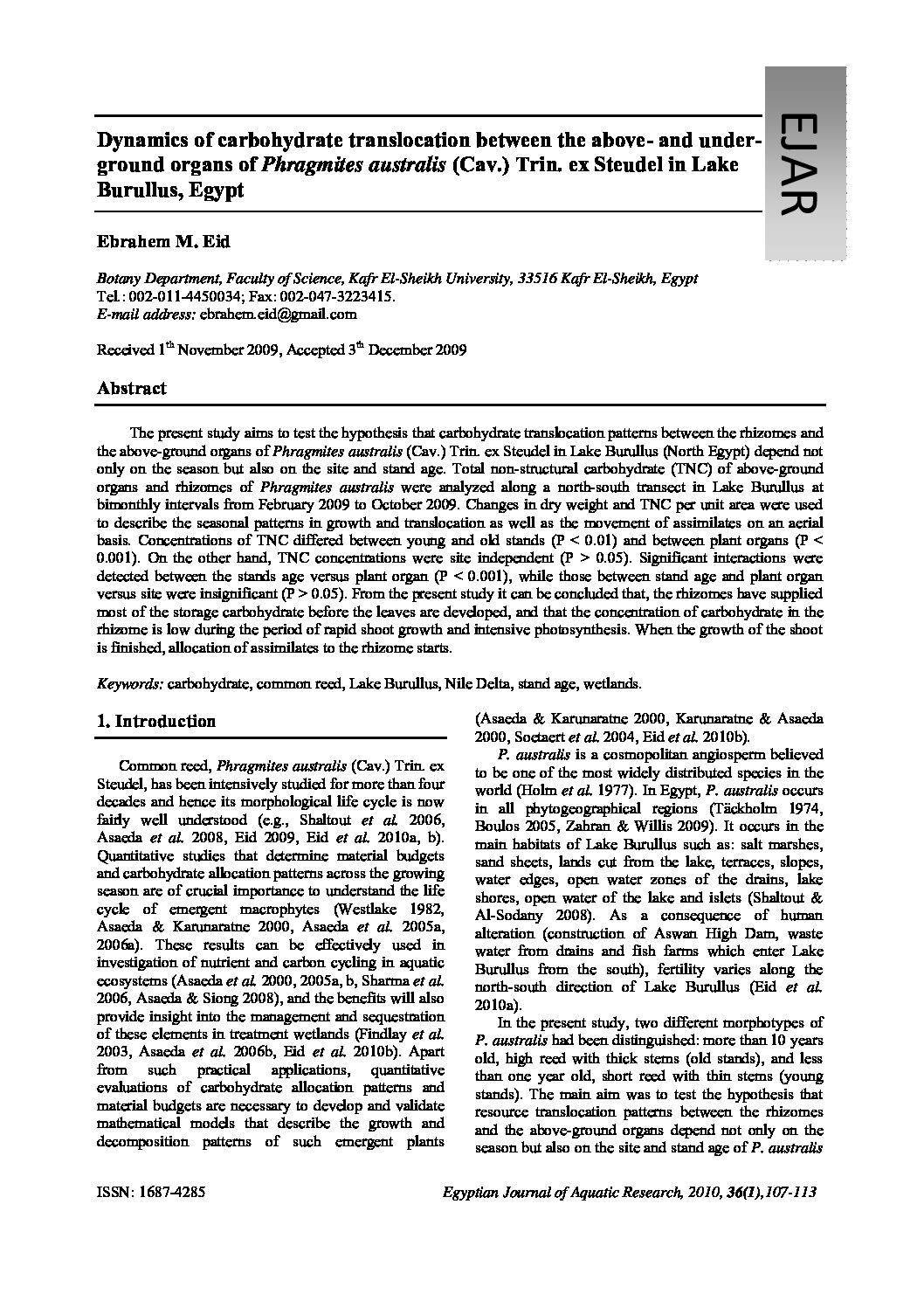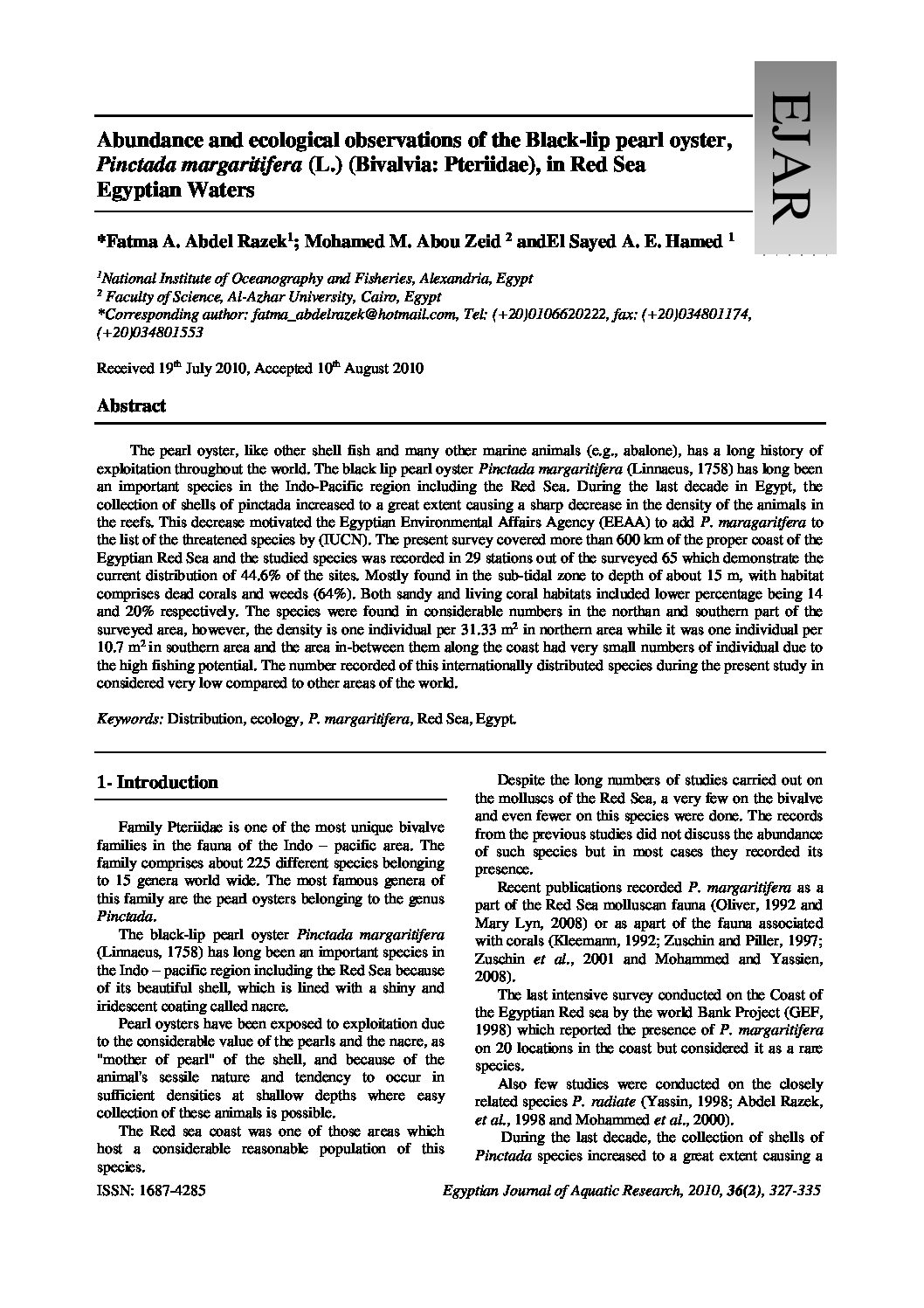Categories
vol-36Dynamics of carbohydrate translocation between the above- and underground organs of Phragmites australis (Cav.) Trin. ex Steudel in Lake
Burullus, Egypt
Ebrahem M. Eid
Botany Department, Faculty of Science, Kafr El-Sheikh University, 33516 Kafr El-Sheikh, Egypt
Tel.: 002-011-4450034; Fax: 002-047-3223415.
E-mail address: [email protected]
Received 1th November 2009, Accepted 3th December 2009
Abstract
The present study aims to test the hypothesis that carbohydrate translocation patterns between the rhizomes and
the above-ground organs of Phragmites australis (Cav.) Trin. ex Steudel in Lake Burullus (North Egypt) depend not
only on the season but also on the site and stand age. Total non-structural carbohydrate (TNC) of above-ground
organs and rhizomes of Phragmites australis were analyzed along a north-south transect in Lake Burullus at
bimonthly intervals from February 2009 to October 2009. Changes in dry weight and TNC per unit area were used
to describe the seasonal patterns in growth and translocation as well as the movement of assimilates on an aerial
basis. Concentrations of TNC differed between young and old stands (P < 0.01) and between plant organs (P <
0.001). On the other hand, TNC concentrations were site independent (P > 0.05). Significant interactions were
detected between the stands age versus plant organ (P < 0.001), while those between stand age and plant organ
versus site were insignificant (P > 0.05). From the present study it can be concluded that, the rhizomes have supplied
most of the storage carbohydrate before the leaves are developed, and that the concentration of carbohydrate in the
rhizome is low during the period of rapid shoot growth and intensive photosynthesis. When the growth of the shoot
is finished, allocation of assimilates to the rhizome starts.
Keywords: carbohydrate, common reed, Lake Burullus, Nile Delta, stand age, wetlands







